Parkinson’s Disease—Going Beyond the Tremor
We conducted a large survey of people who have Parkinson’s disease (PD), and asked many questions about what it’s like living with a chronic health condition that affects people so uniquely. Here are the highlights from what our community shared with us:
Tremor may be mistaken for other conditions
Many symptoms of PD overlap with other conditions, which can sometimes lead to misdiagnosis. About one-third of respondents initially received an inaccurate diagnosis, including essential tremor (31%), depression/anxiety (27%), and benign-essential tremor (15%).
Each person with PD struggles with unique symptoms
Parkinson’s is a highly variable disease, meaning that different people have different combinations of symptoms, and those symptoms can be at varying severity levels.
People with PD tend to experience a myriad of symptoms that go well beyond the typical tremor and other motor symptoms. There are also considerable differences among men and women and their experiences with PD symptoms!
It can be frustrating coping with a disease that encompasses such a wide range of symptoms. Many people feel that dealing with these symptoms can be physically and emotionally draining…
Many exercise to help manage symptoms
While exercise is important for everyone, it plays a crucial role in people with PD. Regular exercise can be essential for people with PD to maintain balance and mobility, and it may help slow the progression of the disease.
The most common types of exercise are walking (64%, flexibility exercises or stretching (53%), biking (35%), gait and balancing training (28%), and strength/resistance training (26%). Women are more likely to exercise 2-3 days per week or more to control their symptoms than men (71% vs. 55%).
The Parkinson’s Disease In America 2017 online survey gathered insights from 1,152 individuals currently suffering from Parkinson’s disease to better understand their symptoms and management of this condition, as well as the impact on their lives.

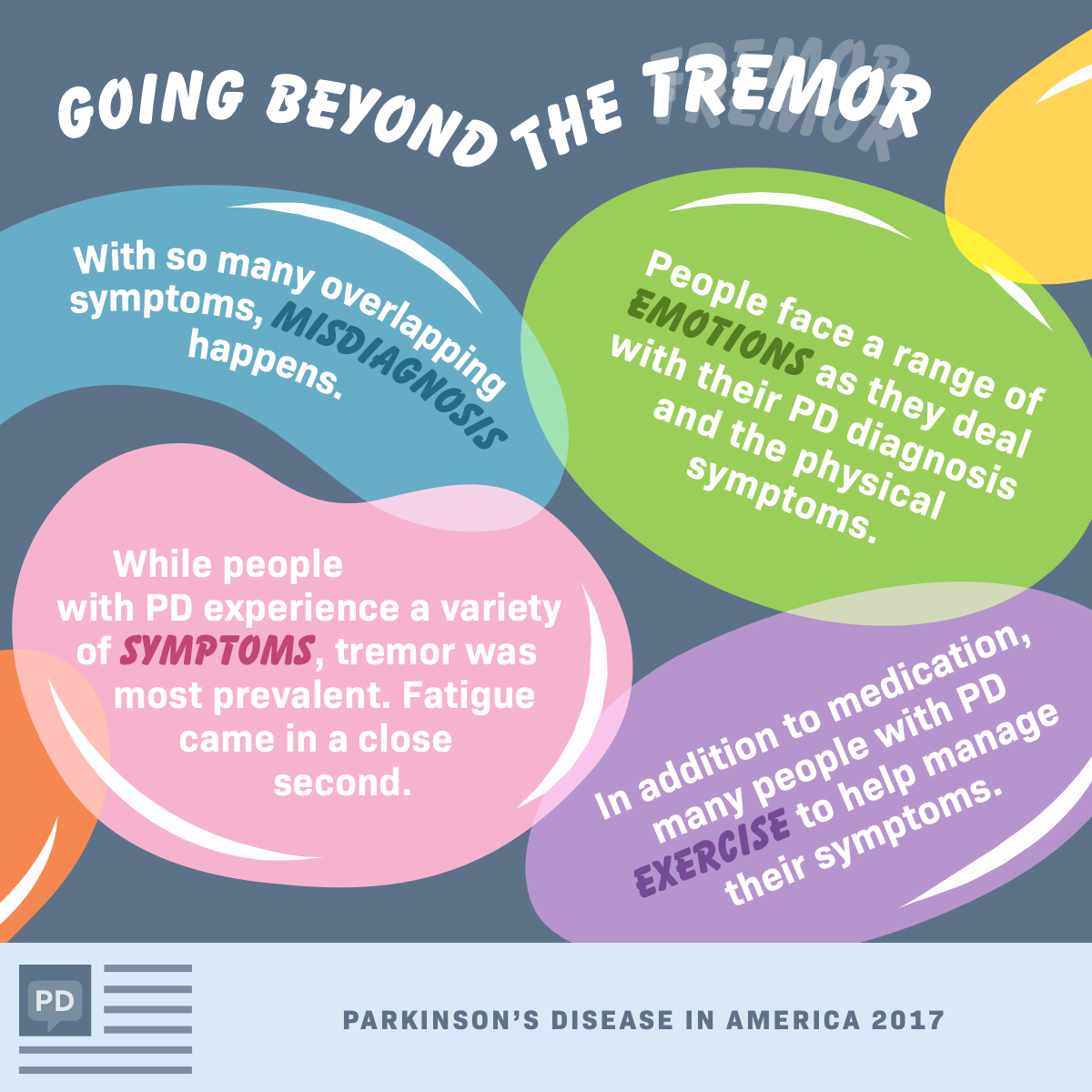

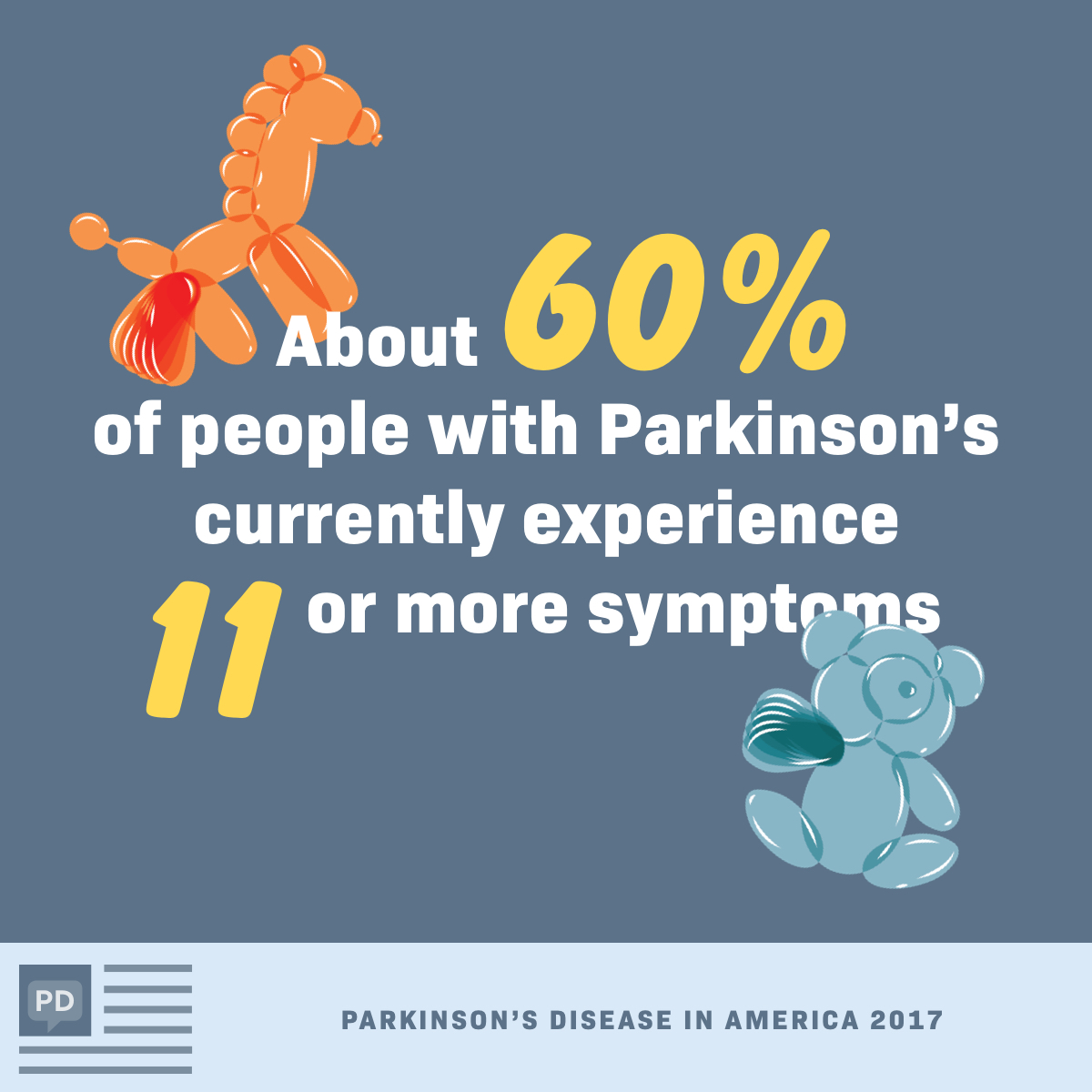
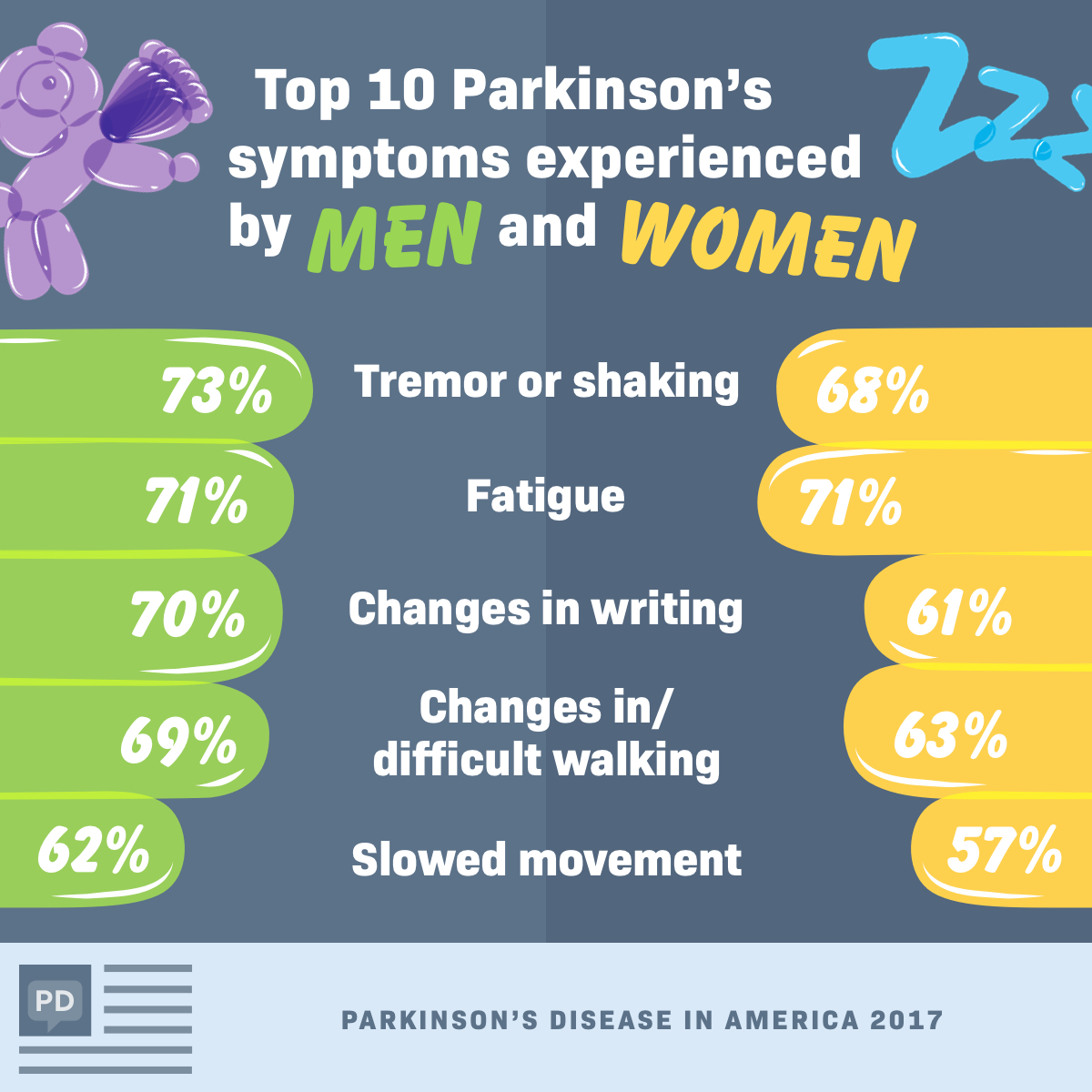
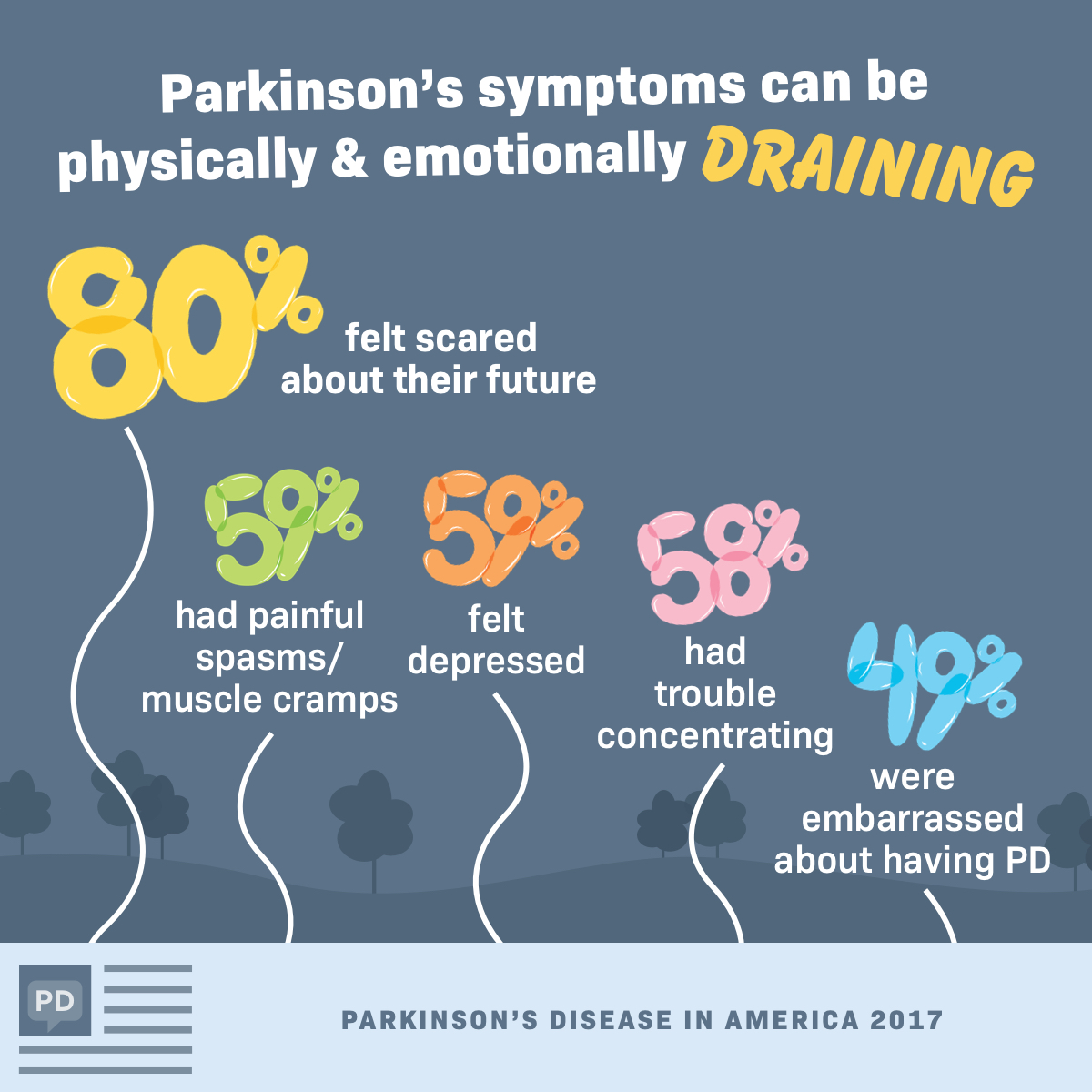
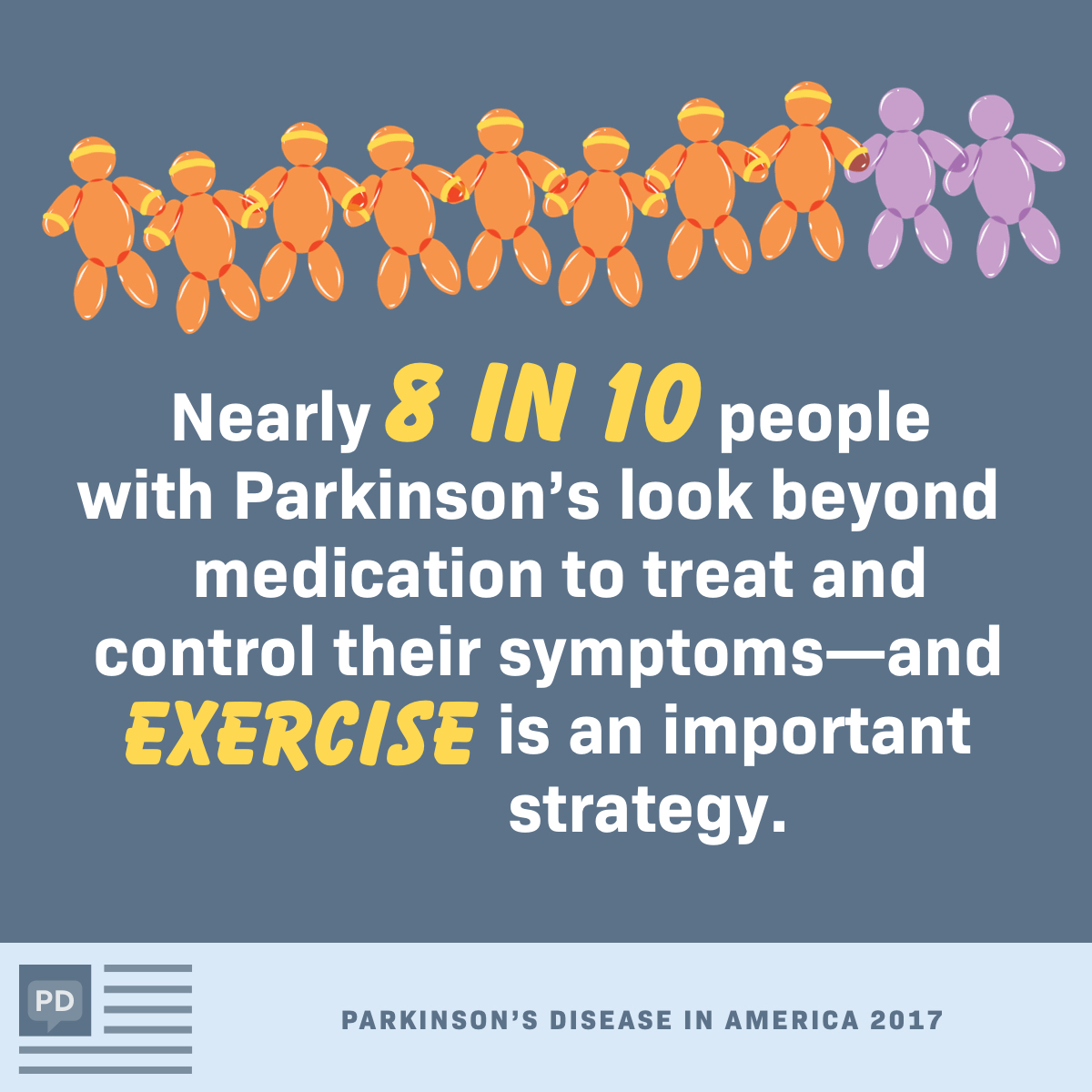
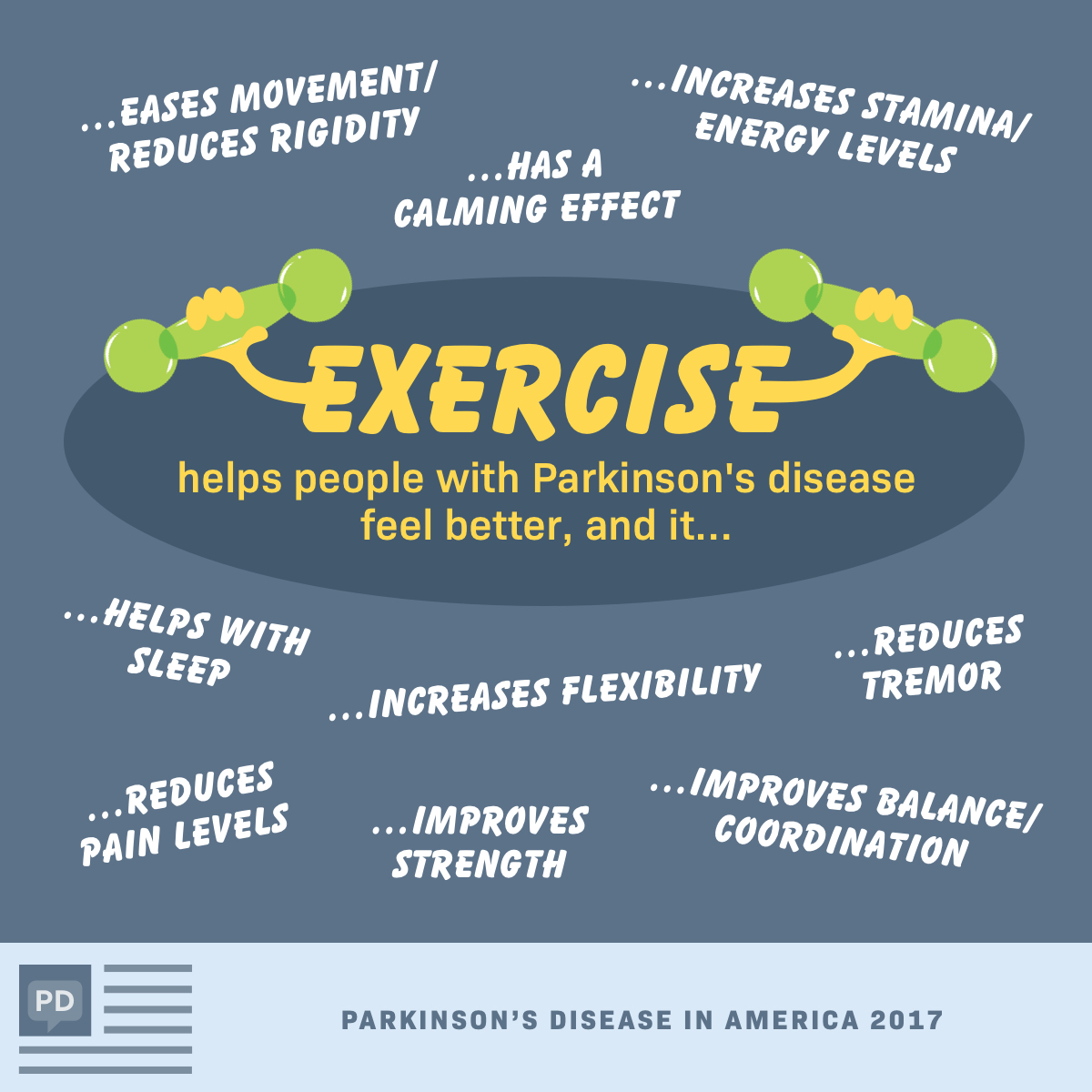
0 comments